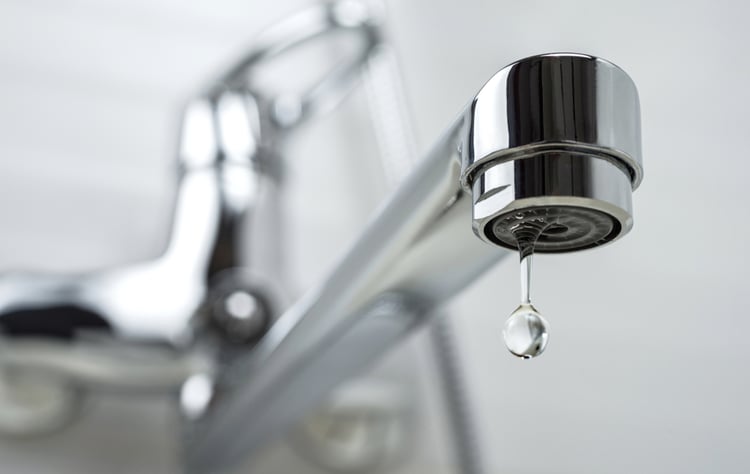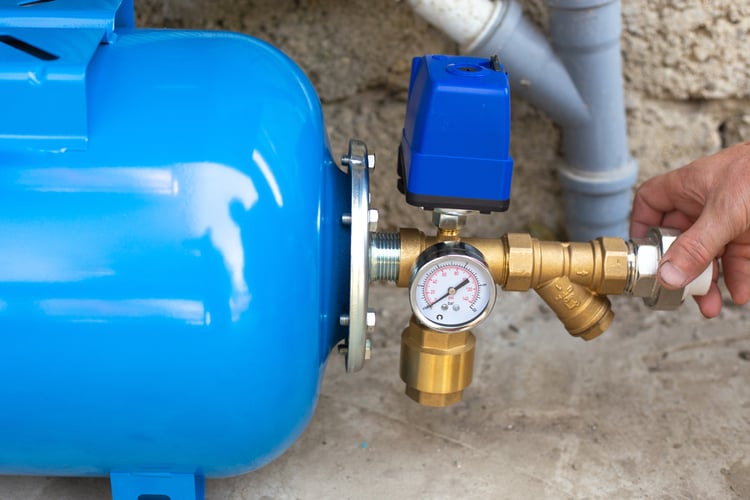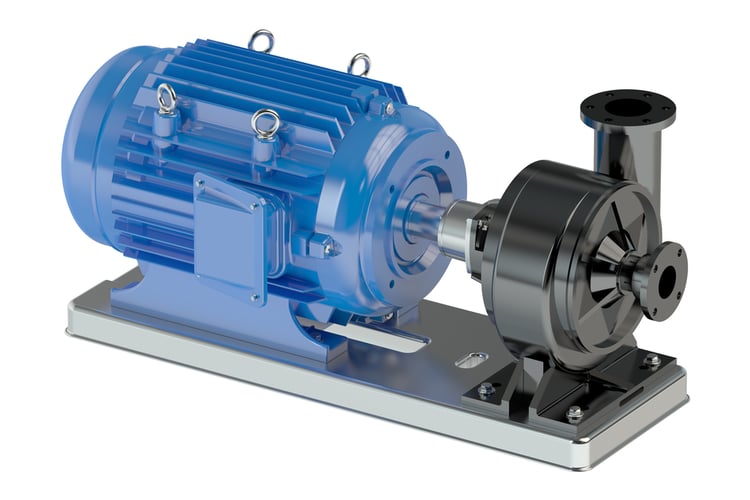Water Pressure Booster Pump: When it is required? [Checklist]
![Water Pressure Booster Pump: When it is required? [Checklist] Water Pressure Booster Pump: When it is required? [Checklist]](https://www.ny-engineers.com/hs-fs/hubfs/shutterstock_235335628%20%281%29-min.jpg?width=1750&name=shutterstock_235335628%20%281%29-min.jpg)
Potable water can only be distributed effectively among faucets, showers, toilets, and other plumbing fixtures if delivered with sufficient pressure. The minimum flow rate and pressure values for New York City are specified in Chapter 6 of the NYC Plumbing Code, and they vary depending on the specific type of fixture. The required values for some of the most common plumbing fixtures are the following:
| TYPE OF FIXTURE | MINIMUM FLOW RATE (GPM) | MINIMUM FLOW PRESSURE (PSI) |
| Bathtub, no shower | 4 | 20 |
| Dishwasher, residential | 2.75 | 8 |
| Drinking fountain | 0.75 | 8 |
| Lavatory | 2 | 8 |
| Shower | 3 | 8 |
| Sink, residential | 2.5 | 8 |
| Sink, service | 3 | 8 |
| Urinal, valve | 18 | 20 |
| WC, tank, one piece | 3 | 20 |
The NYC Plumbing Code establishes these minimum pressure and flow rate values for all operating conditions, even during peak demand, when multiple plumbing fixtures are being used simultaneously.
Our plumbing engineers can help you select the best water booster pump for your building.
Do You Have Low Water Pressure?

If the water supply pressure is insufficient to meet the required pressure and flow values for plumbing fixtures, a water pressure booster system must be installed. There are three main options allowed by the NYC Plumbing Code:
- An elevated water tank
- A hydro-pneumatic pressure booster
- A water pressure booster pump, which is the topic of this article
Keep in mind that the need for a water booster pump is partly determined by building characteristics; since the minimum pressure and flow rate values are specified at fixture outlets, the likelihood of needing a booster pump increases for taller buildings.
The NYC Plumbing Code requires that all booster pumps be equipped with a low-pressure cutoff switch, which prevents the creation of a vacuum when the pressure on the suction side reaches values of 10 psi or less. When negative pressure isn’t accounted for, a phenomenon called cavitation occurs, where small bubbles rapidly form and collapse in the flowing water. Cavitation can cause localized shockwaves, damaging the booster pump impeller and inducing mechanical vibrations, which affect the motor driving the pump as well
Using a single booster pump for more than one building is not allowed by the NYC Plumbing Code, except in projects with multiple buildings that have a common owner. An individual water consumer is not allowed to supply pressurized water to neighboring buildings.
Checklist Before You Install a Water Booster Pump

Keep in mind that low pressure and flow rates at fixture outlets have many possible causes, and you should not immediately assume that low water supply pressure is to blame. Before you install a Water Pressure Booster Pump, make sure your problem is not due to one of the following causes:
- Clogged water pipes can cause a drastic pressure drop between the service entrance and the point of consumption, which is a common issue in older installations.
- Undersized pipes, a common result of poor plumbing design, can have the same effect as clogged water pipes.
- You could also have a partially closed shut-off valve causing pressure drop, and the solution is as simple as opening it fully.
In any of these scenarios, installing a water booster pump represents a waste of money, and excessive pressure may damage your installation. Even if there is no damage, you will be wasting electric power to run the booster pump, and the excessive pressure will raise flow rates, increasing your water bill as well. Before you proceed, make sure you don’t have a partially closed valve, and get a professional assessment of your installation to verify that you don’t have piping issues.
Increasing the Efficiency of Water Booster Pumps

As with all pieces of equipment driven by an electric motor, it is possible to save energy if a booster pump is equipped with a variable frequency drive (VFD) for speed control. For fractional horsepower motors, such as those used in small residential applications, electronically commutated motors (ECMs) are a more cost-effective option than VFDs.
There are several reasons why it makes sense to deploy speed control for a booster pump:
- The required pressure boost may vary depending on current building conditions. For example, it may not be necessary when water demand is low.
- Pressure variations may also be caused by the utility company. For example, low-pressure issues may only be present when the water distribution system is experiencing peak demand.
- Variable frequency drives can be used to soft-start a Water Pressure Booster Pump, preventing the inrush current, which is typically five to eight times higher than the rated current. In the absence of a soft-starting device, this inrush causes a sudden drop in voltage, which can damage sensitive electronic devices.
When a Water Pressure Booster Pump is equipped with speed control, its operation can be adjusted in real-time in response to building and water supply conditions, maximizing energy efficiency. In fractional horsepower applications, electronically commutated motors offer the highest energy efficiency available while offering built-in speed control. For pumps of higher horsepower, which are typically used in commercial applications, the best possible combination is having a three-phase motor with NEMA Premium efficiency equipped with a variable frequency drive.
Reducing the Cost of the Installation
Both pumps and electric motors have prices that are highly sensitive to nameplate capacity, and their efficiency is reduced when they operate below their rated horsepower. Oversized installations are both expensive and inefficient, so hiring a qualified engineering firm for design and specification is highly recommended.
The upfront cost of the water booster system can also be reduced if the motor uses a higher voltage rating. For example, a 460-volt motor draws only half the current required by a 230-volt motor, assuming both have the same nameplate horsepower. Since electrical circuits are sized based on current and not voltage, the circuit for the higher-voltage motor is the least expensive.
Concluding Remarks
Water booster pumps are required when the pressure and flow rate delivered at individual plumbing fixtures fail to meet code requirements. However, before installing the system it is important to confirm if low pressure is not due to other factors, such as clogged or undersized piping. A Water Pressure Booster Pump offers maximum performance when it is properly sized, and equipped with a high-efficiency motor and speed control.
Editors Note: This post was originally published in November 2016 and has been revamped and updated for accuracy and comprehensiveness.

Michael Tobias
Michael Tobias, the Founding Principal of NY Engineers, currently leads a team of 50+ MEP/FP engineers and has led over 1,000 projects in the US
Join 15,000+ Fellow Architects and Contractors
Get expert engineering tips straight to your inbox. Subscribe to the NY Engineers Blog below.



